Syllabuses and coursebooks. Syllabus versus Curriculum Curriculum –

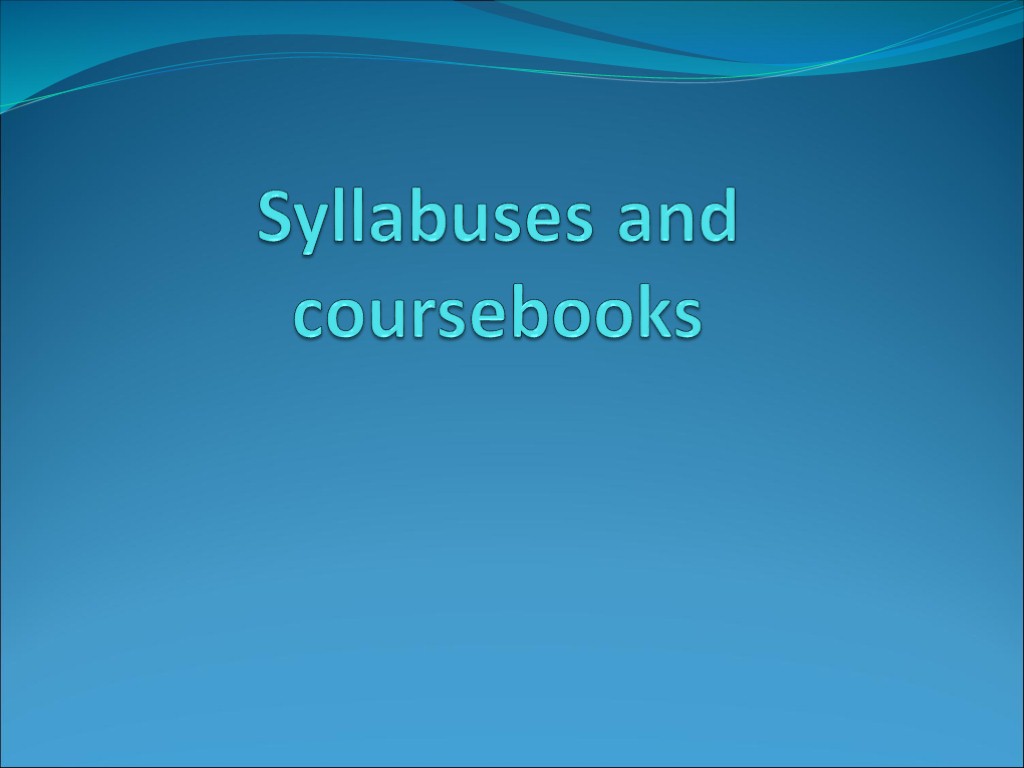
Syllabuses and coursebooks
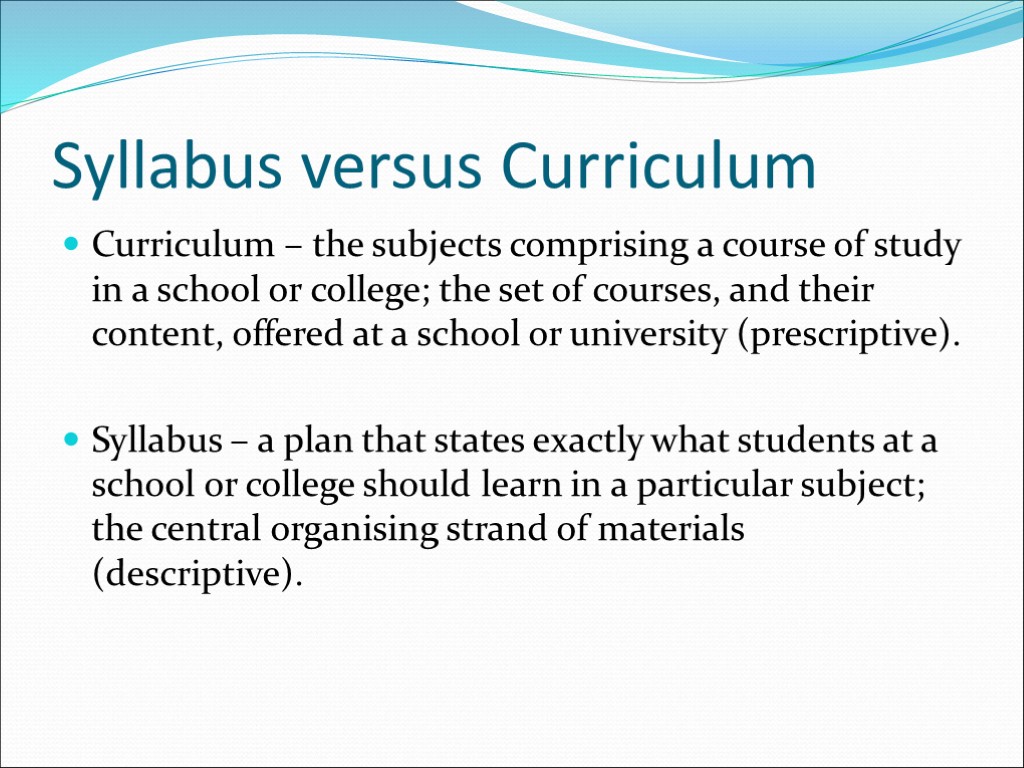
Syllabus versus Curriculum Curriculum – the subjects comprising a course of study in a school or college; the set of courses, and their content, offered at a school or university (prescriptive). Syllabus – a plan that states exactly what students at a school or college should learn in a particular subject; the central organising strand of materials (descriptive).
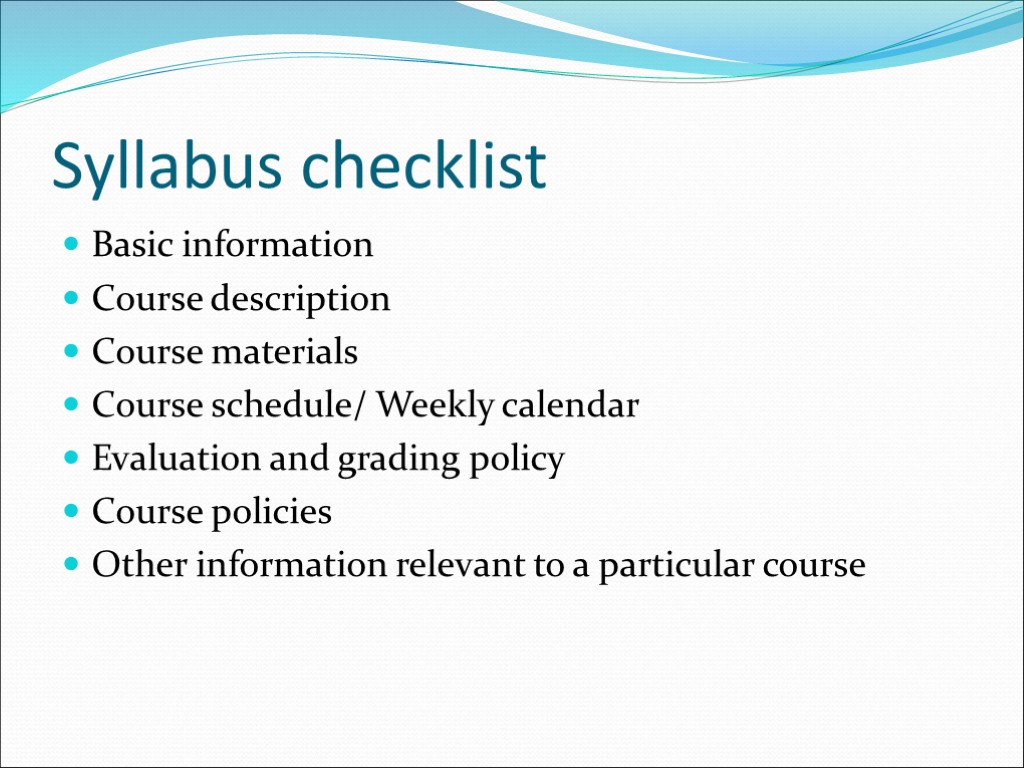
Syllabus checklist Basic information Course description Course materials Course schedule/ Weekly calendar Evaluation and grading policy Course policies Other information relevant to a particular course
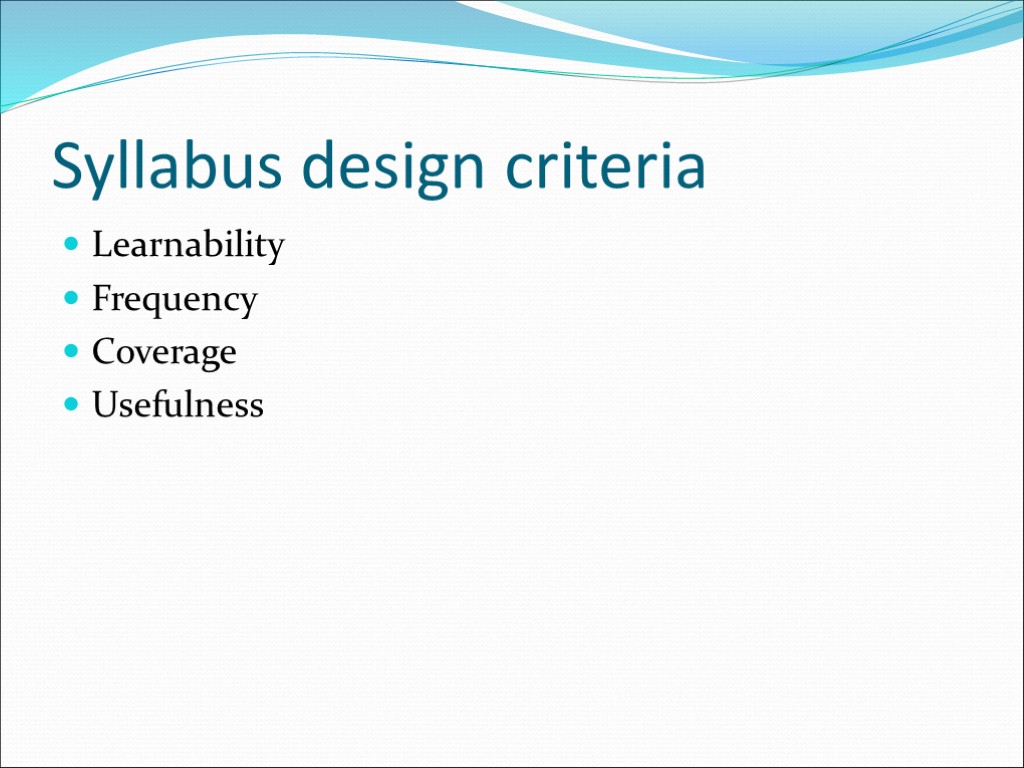
Syllabus design criteria Learnability Frequency Coverage Usefulness
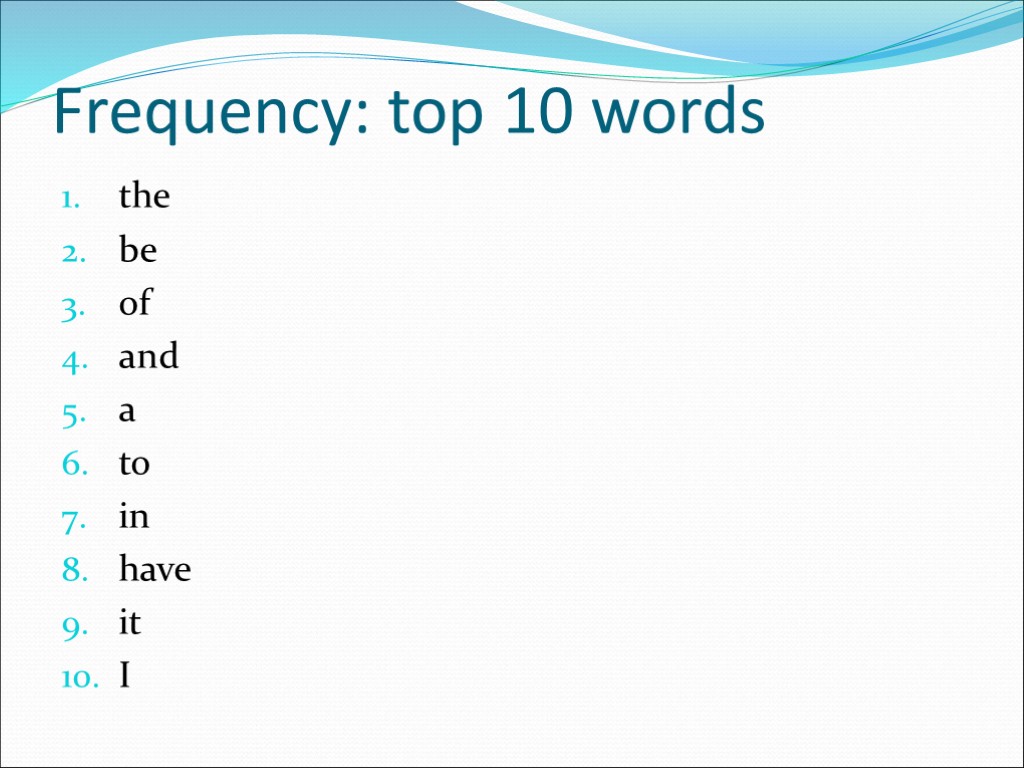
Frequency: top 10 words the be of and a to in have it I
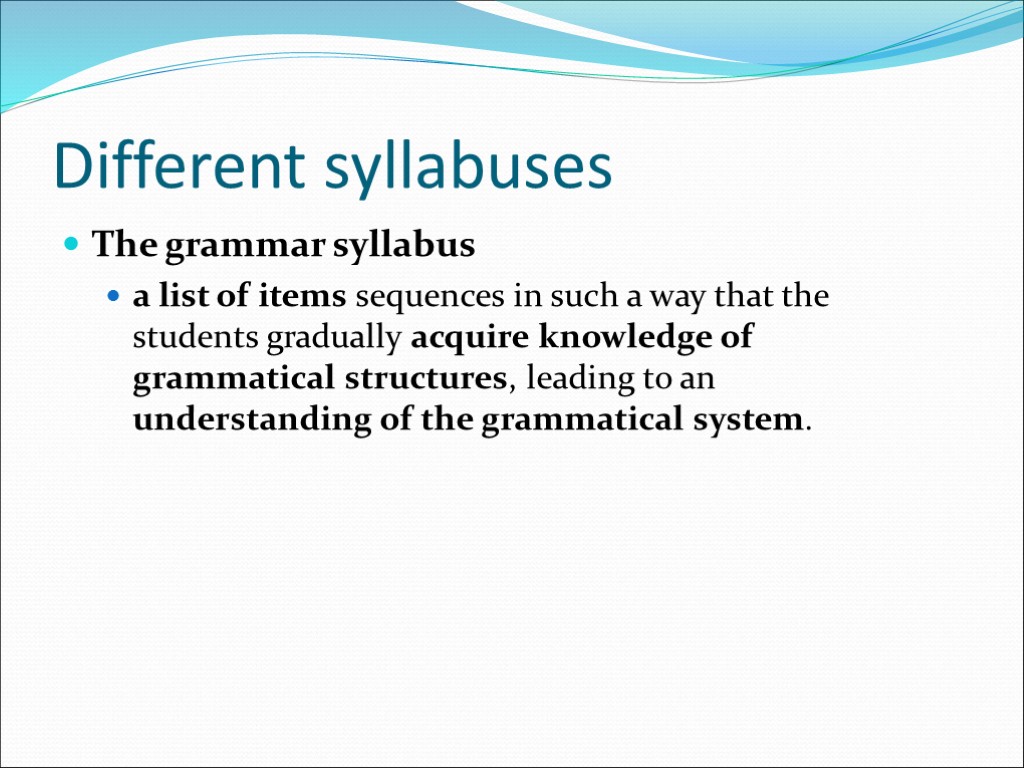
Different syllabuses The grammar syllabus a list of items sequences in such a way that the students gradually acquire knowledge of grammatical structures, leading to an understanding of the grammatical system.
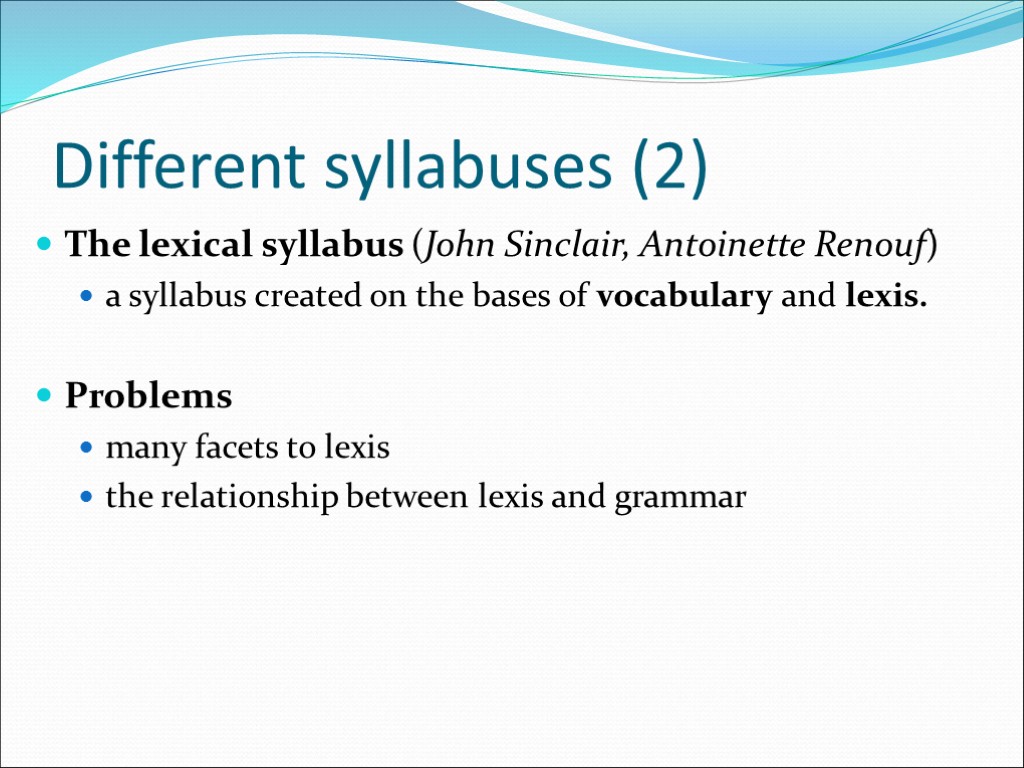
Different syllabuses (2) The lexical syllabus (John Sinclair, Antoinette Renouf) a syllabus created on the bases of vocabulary and lexis. Problems many facets to lexis the relationship between lexis and grammar
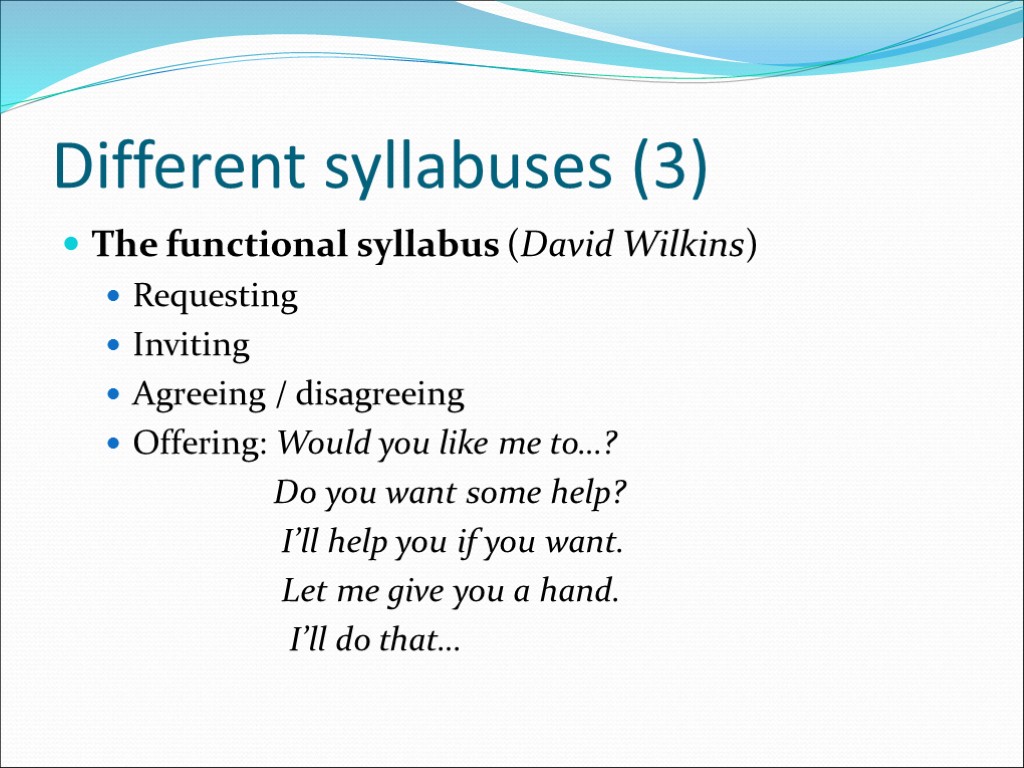
Different syllabuses (3) The functional syllabus (David Wilkins) Requesting Inviting Agreeing / disagreeing Offering: Would you like me to…? Do you want some help? I’ll help you if you want. Let me give you a hand. I’ll do that…
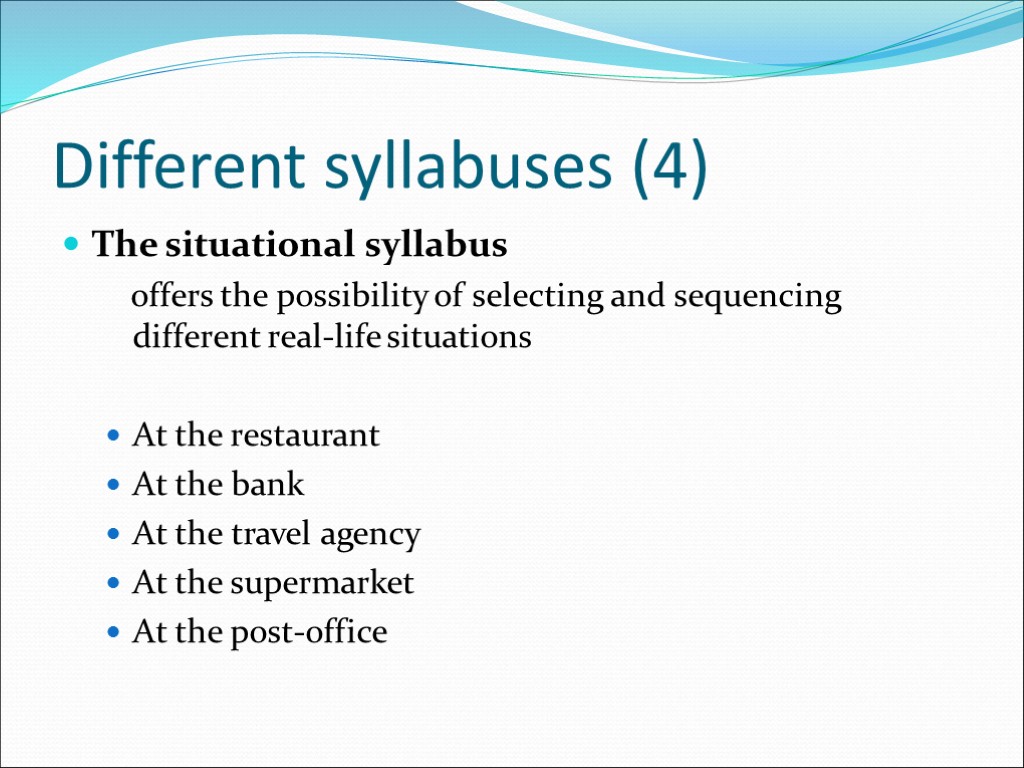
Different syllabuses (4) The situational syllabus offers the possibility of selecting and sequencing different real-life situations At the restaurant At the bank At the travel agency At the supermarket At the post-office

Different syllabuses (5) The topic-based syllabus The weather Language Communication Globalisation Music, etc.
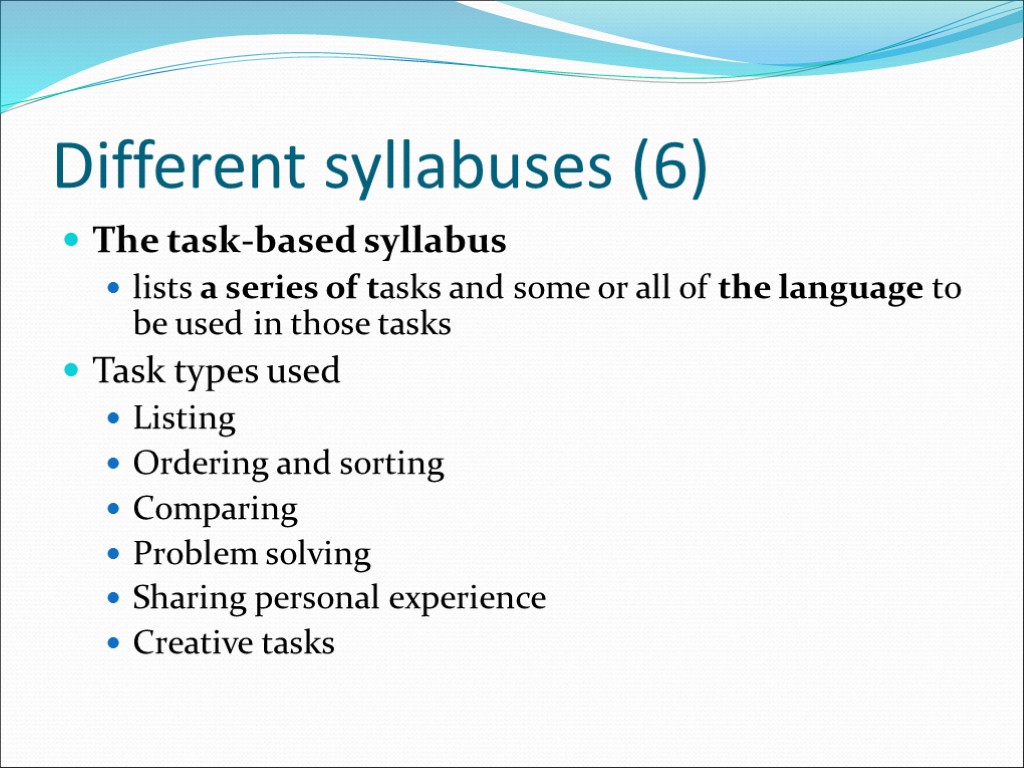
Different syllabuses (6) The task-based syllabus lists a series of tasks and some or all of the language to be used in those tasks Task types used Listing Ordering and sorting Comparing Problem solving Sharing personal experience Creative tasks
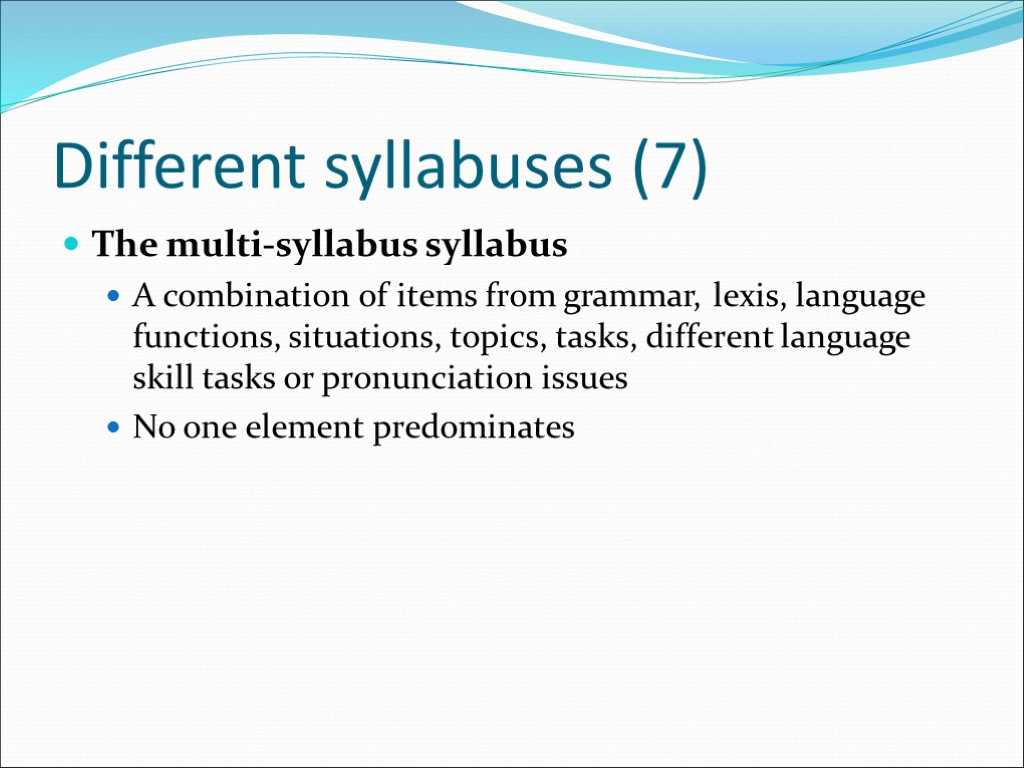
Different syllabuses (7) The multi-syllabus syllabus A combination of items from grammar, lexis, language functions, situations, topics, tasks, different language skill tasks or pronunciation issues No one element predominates
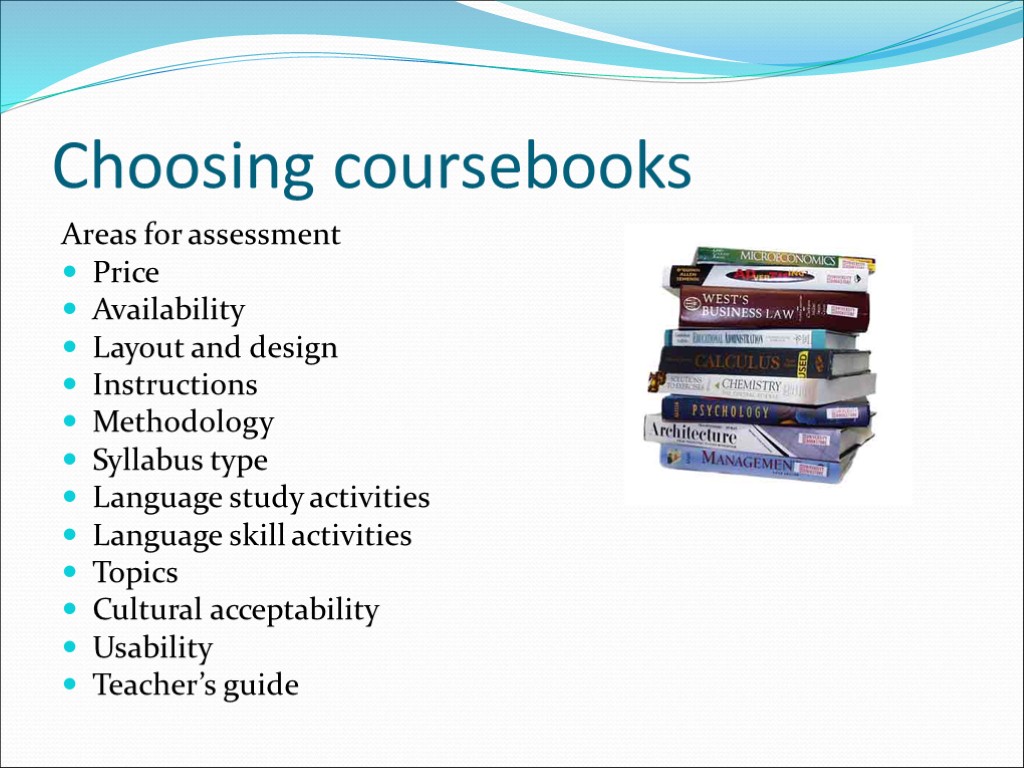
Choosing coursebooks Areas for assessment Price Availability Layout and design Instructions Methodology Syllabus type Language study activities Language skill activities Topics Cultural acceptability Usability Teacher’s guide
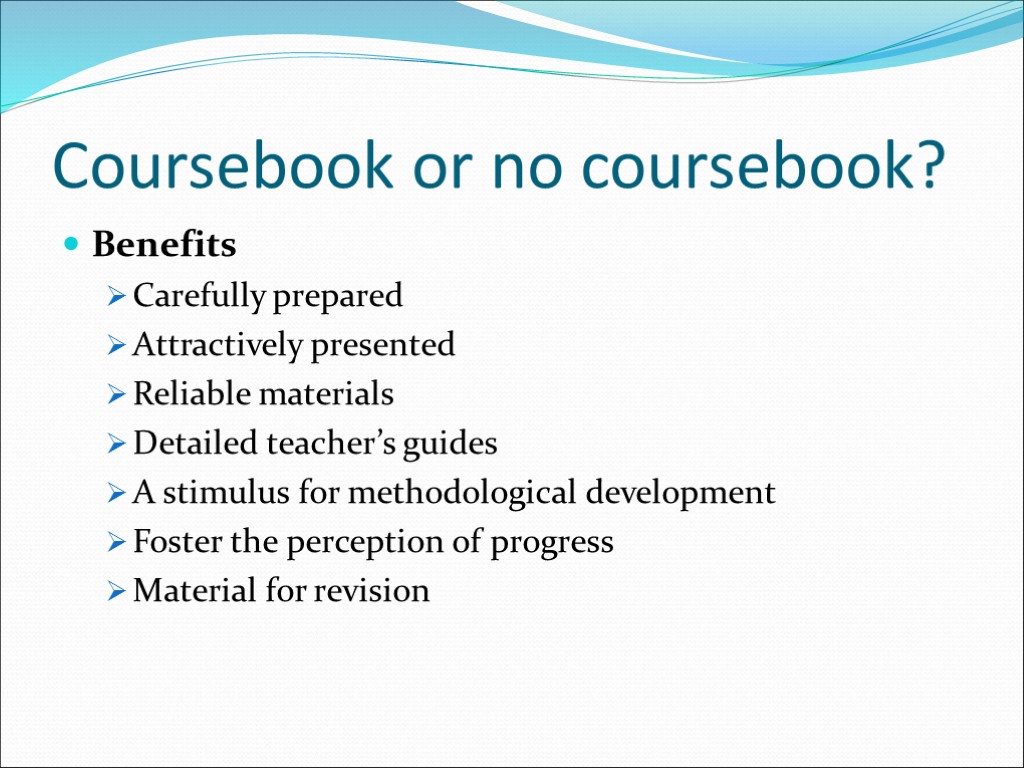
Coursebook or no coursebook? Benefits Carefully prepared Attractively presented Reliable materials Detailed teacher’s guides A stimulus for methodological development Foster the perception of progress Material for revision
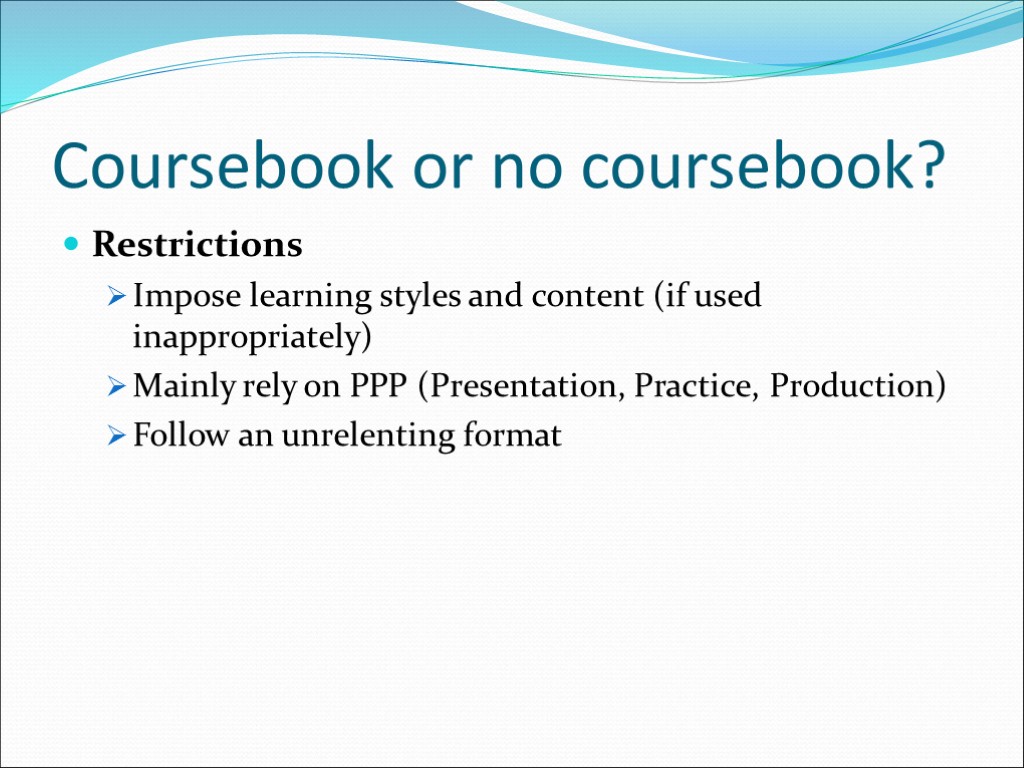
Coursebook or no coursebook? Restrictions Impose learning styles and content (if used inappropriately) Mainly rely on PPP (Presentation, Practice, Production) Follow an unrelenting format
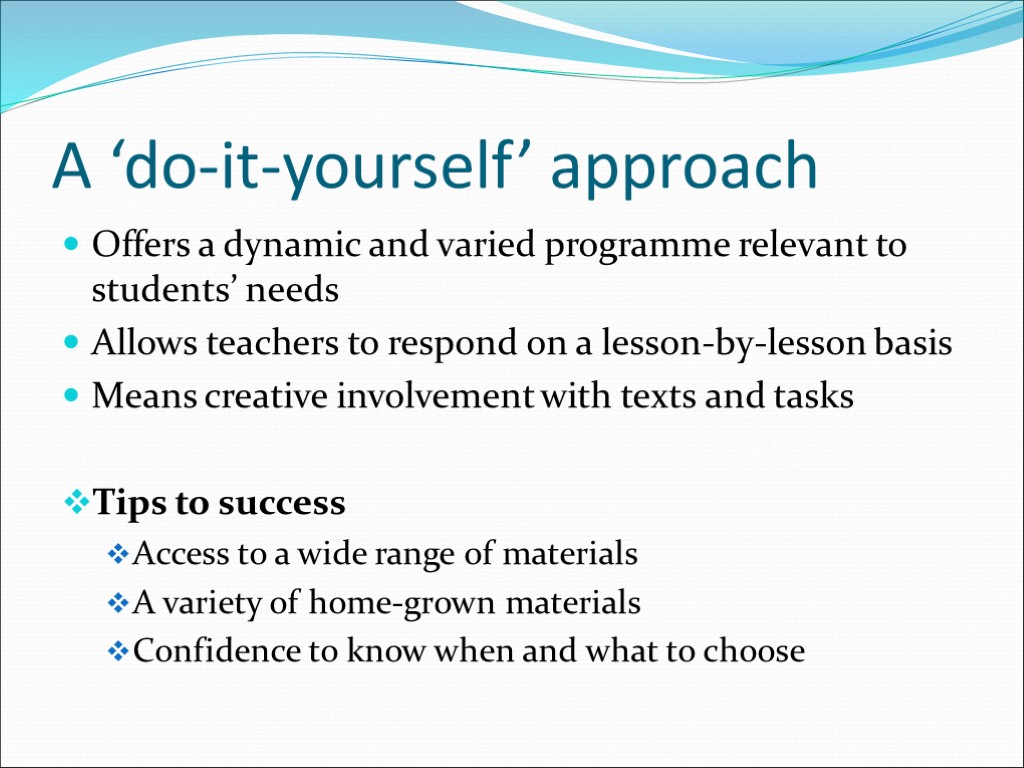
A ‘do-it-yourself’ approach Offers a dynamic and varied programme relevant to students’ needs Allows teachers to respond on a lesson-by-lesson basis Means creative involvement with texts and tasks Tips to success Access to a wide range of materials A variety of home-grown materials Confidence to know when and what to choose
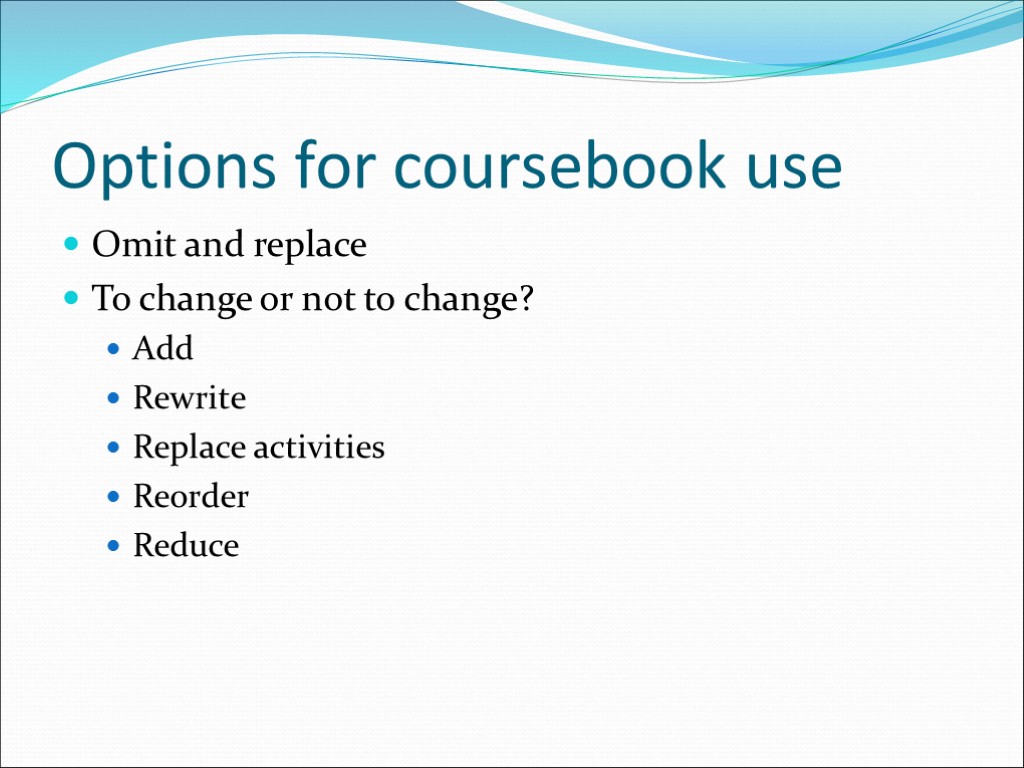
Options for coursebook use Omit and replace To change or not to change? Add Rewrite Replace activities Reorder Reduce

Planning lessons

Curriculum Syllabus Lesson plan and class activities
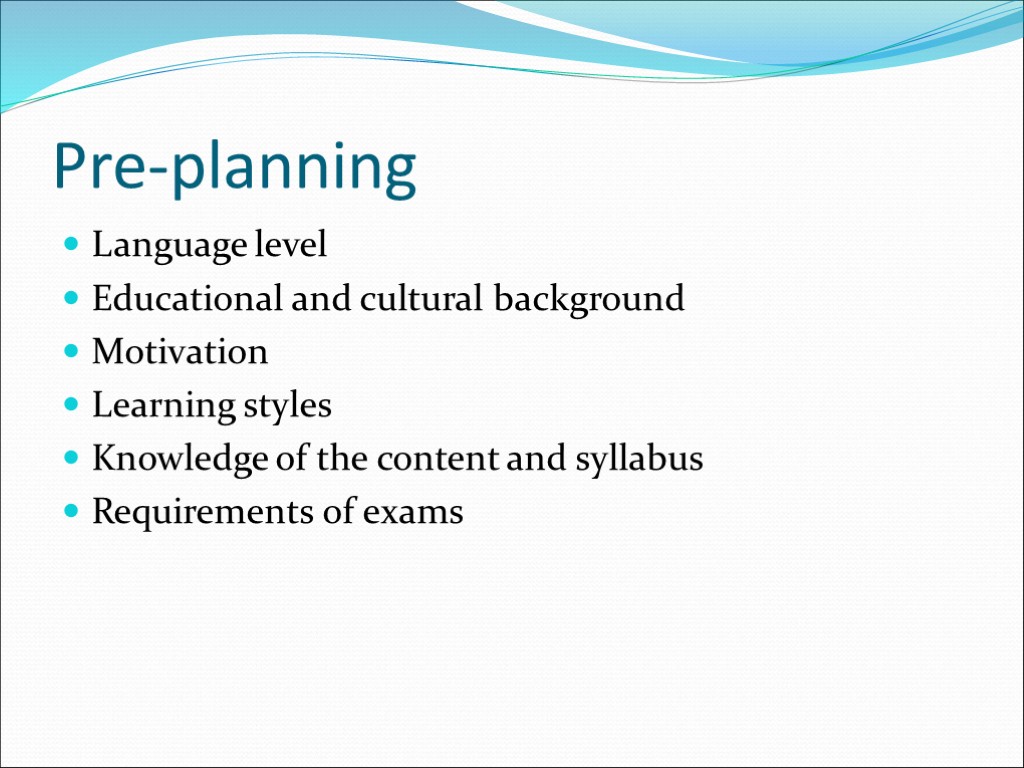
Pre-planning Language level Educational and cultural background Motivation Learning styles Knowledge of the content and syllabus Requirements of exams
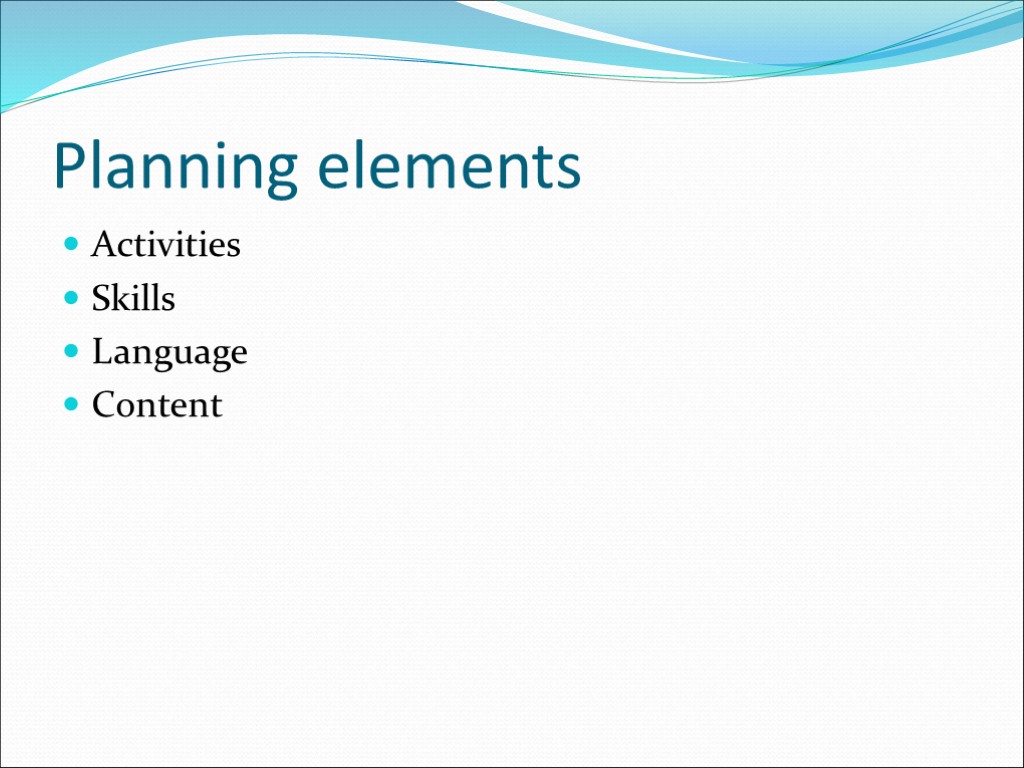
Planning elements Activities Skills Language Content
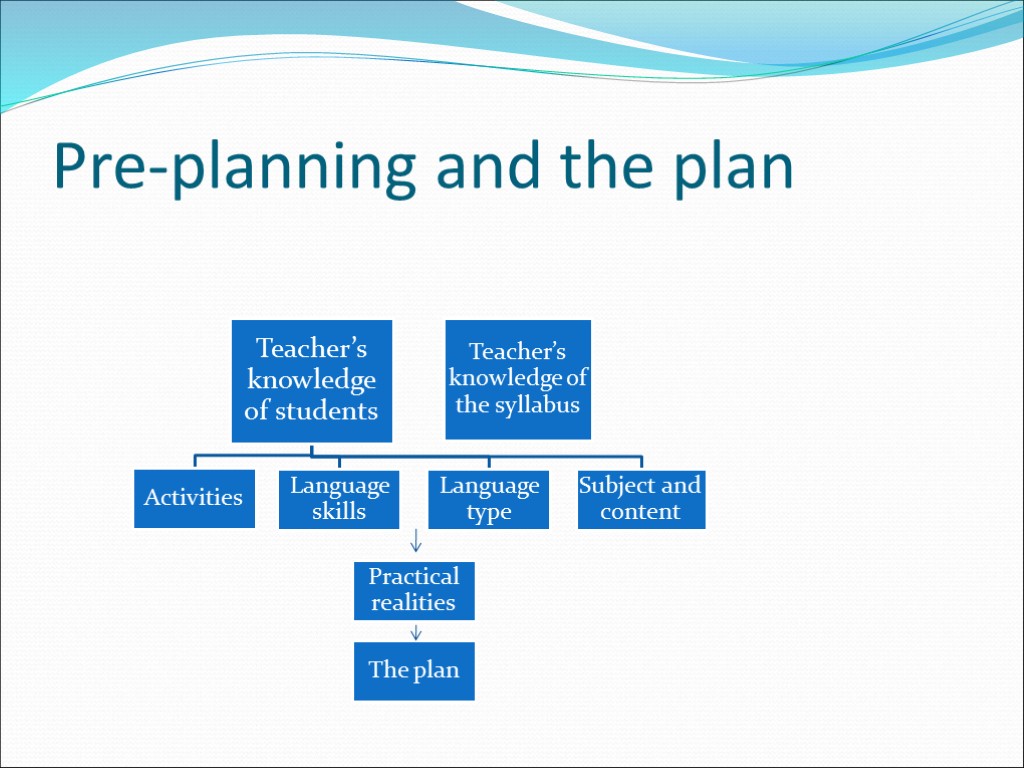
Pre-planning and the plan
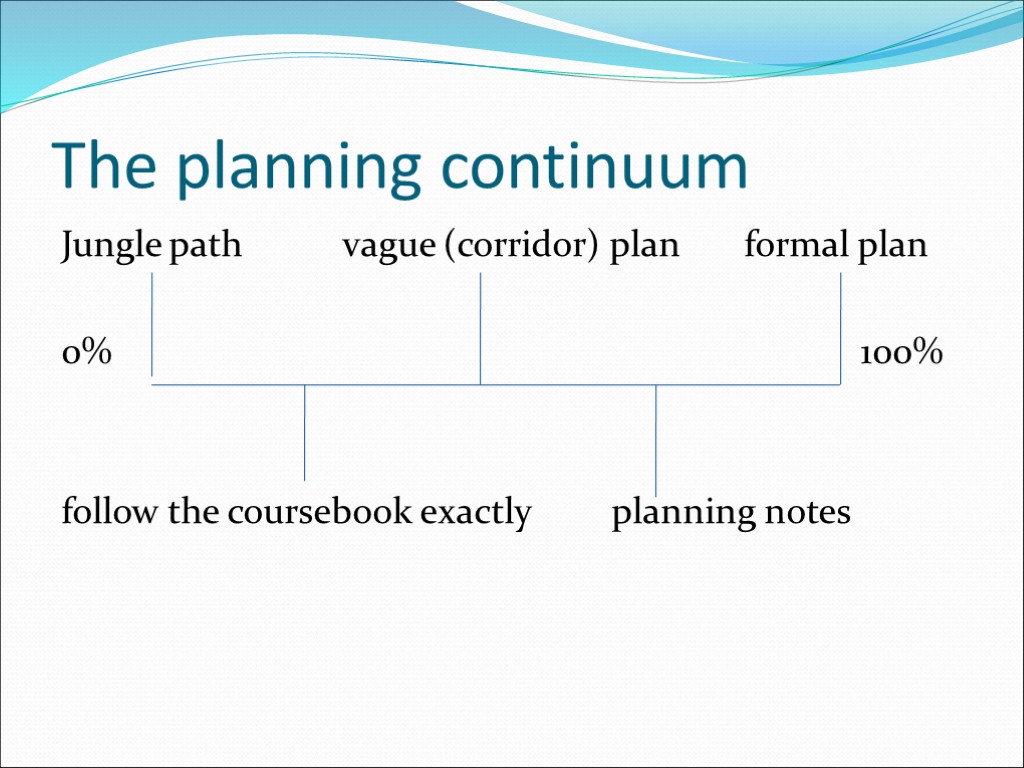
The planning continuum Jungle path vague (corridor) plan formal plan 0% 100% follow the coursebook exactly planning notes
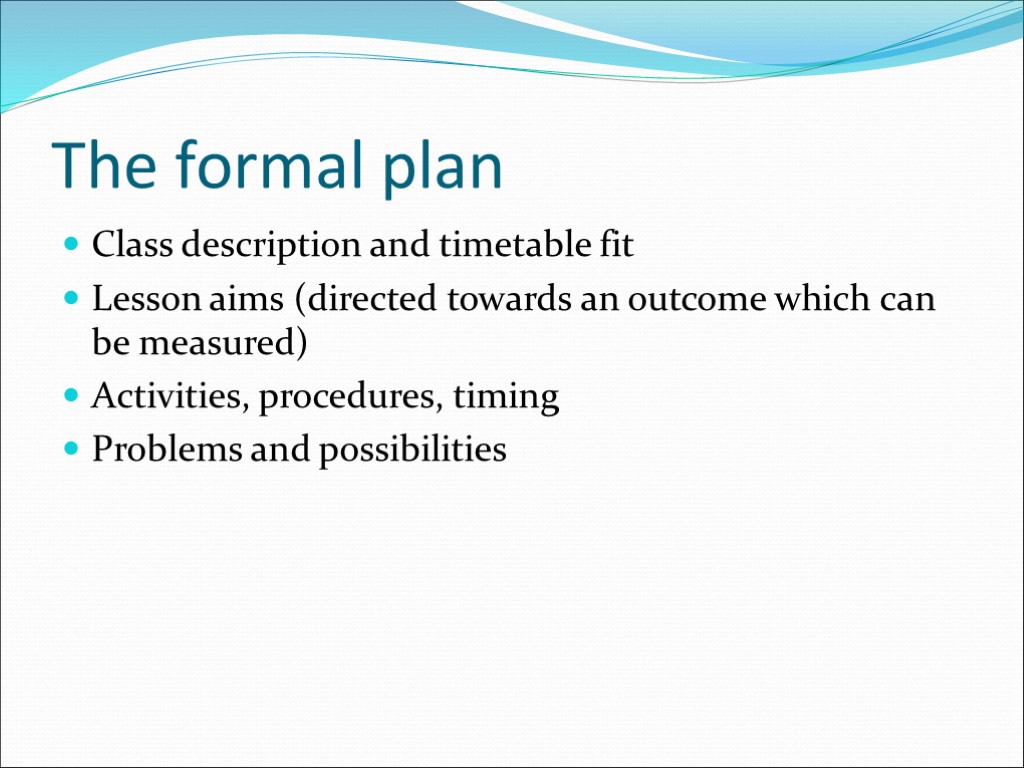
The formal plan Class description and timetable fit Lesson aims (directed towards an outcome which can be measured) Activities, procedures, timing Problems and possibilities

Activities, procedures, timing

Lesson planning
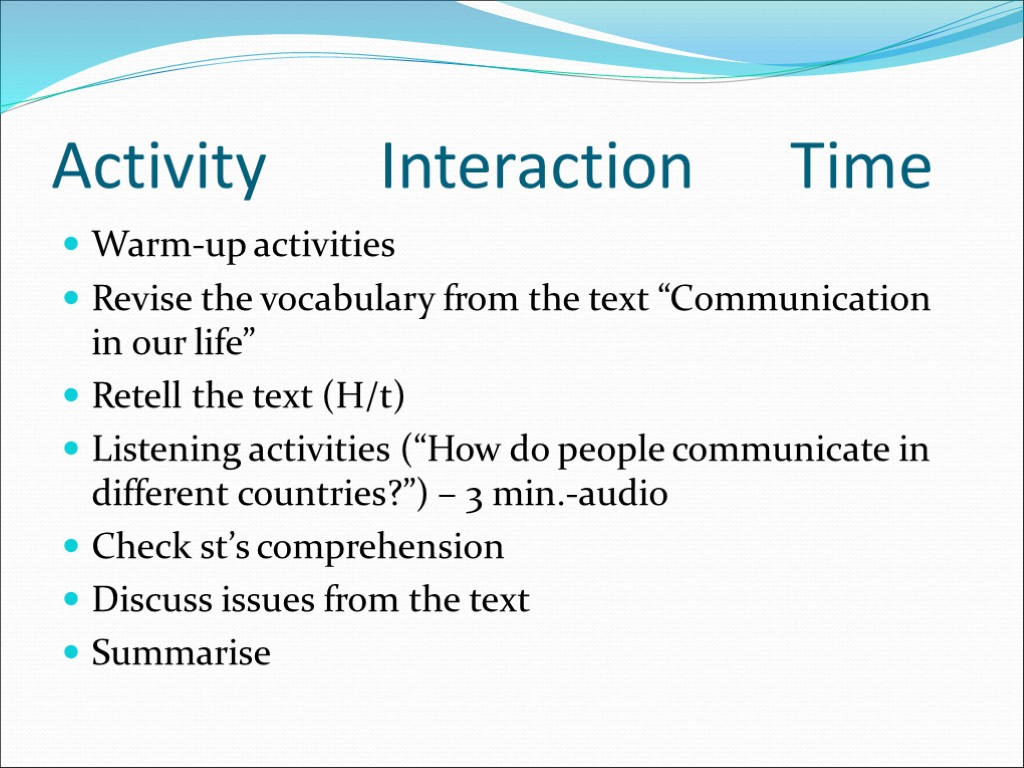
Activity Interaction Time Warm-up activities Revise the vocabulary from the text “Communication in our life” Retell the text (H/t) Listening activities (“How do people communicate in different countries?”) – 3 min.-audio Check st’s comprehension Discuss issues from the text Summarise
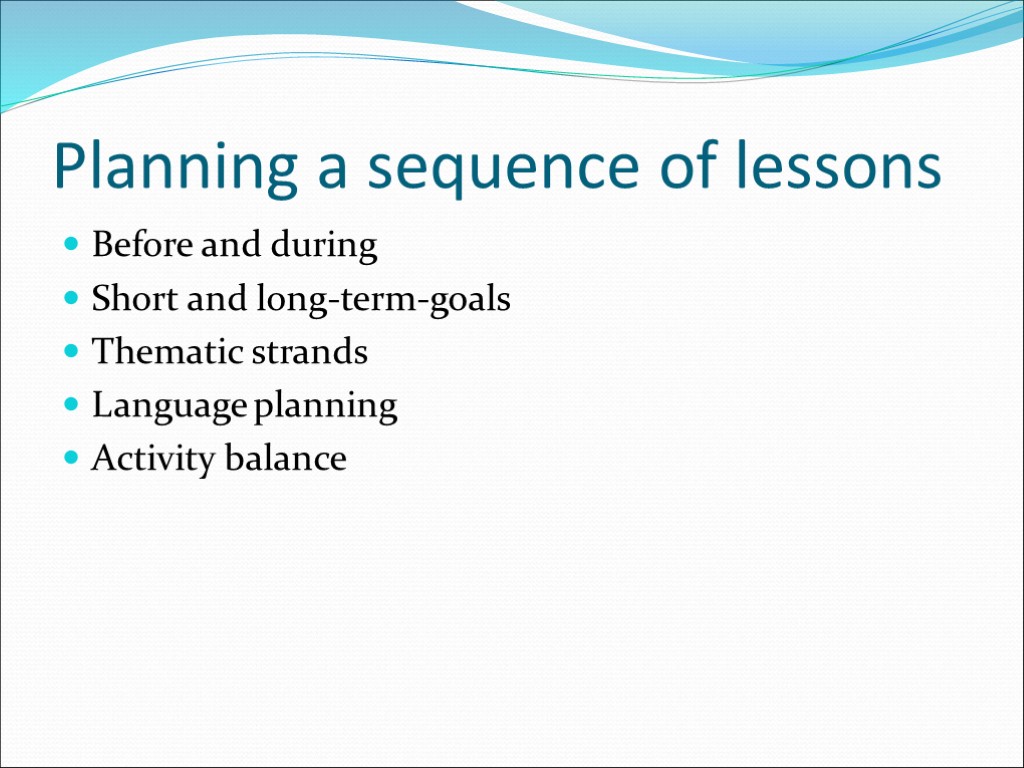
Planning a sequence of lessons Before and during Short and long-term-goals Thematic strands Language planning Activity balance
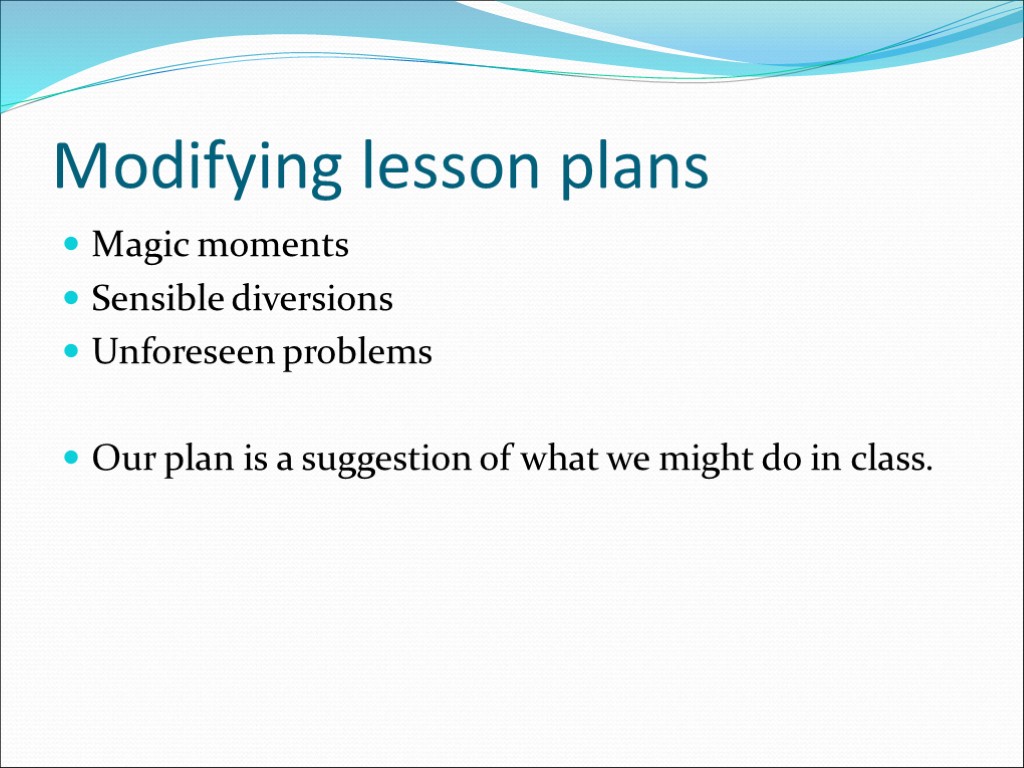
Modifying lesson plans Magic moments Sensible diversions Unforeseen problems Our plan is a suggestion of what we might do in class.
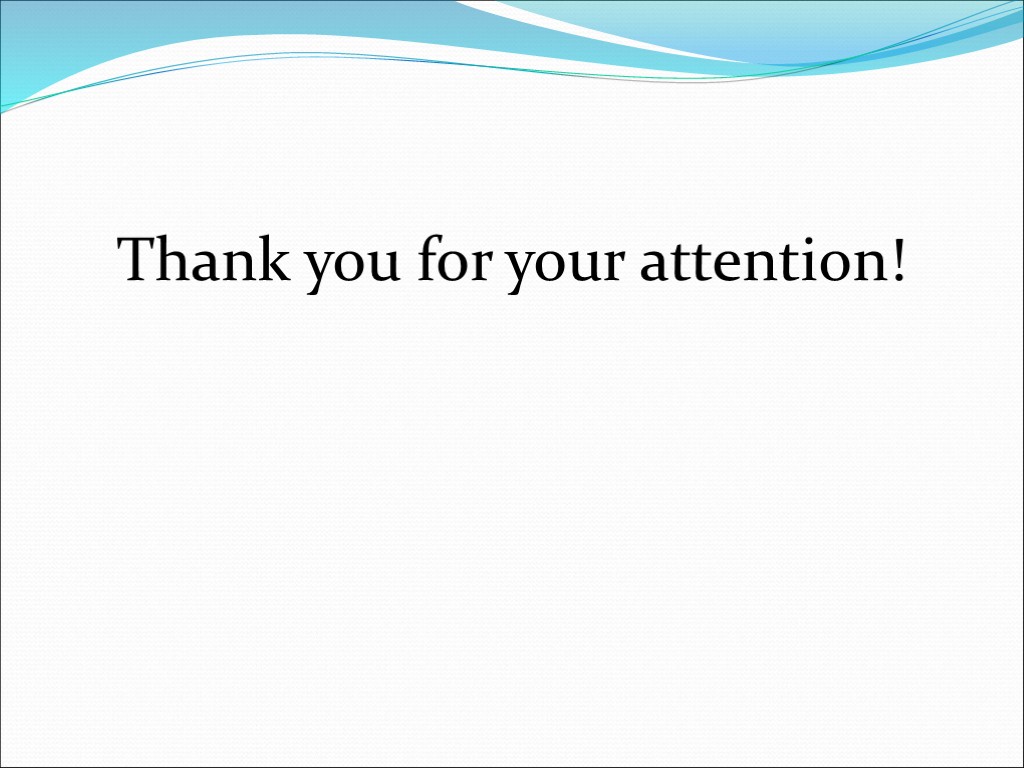
Thank you for your attention!
syllabuses_and_coursebooks.pptx.ppt
- Количество слайдов: 30

